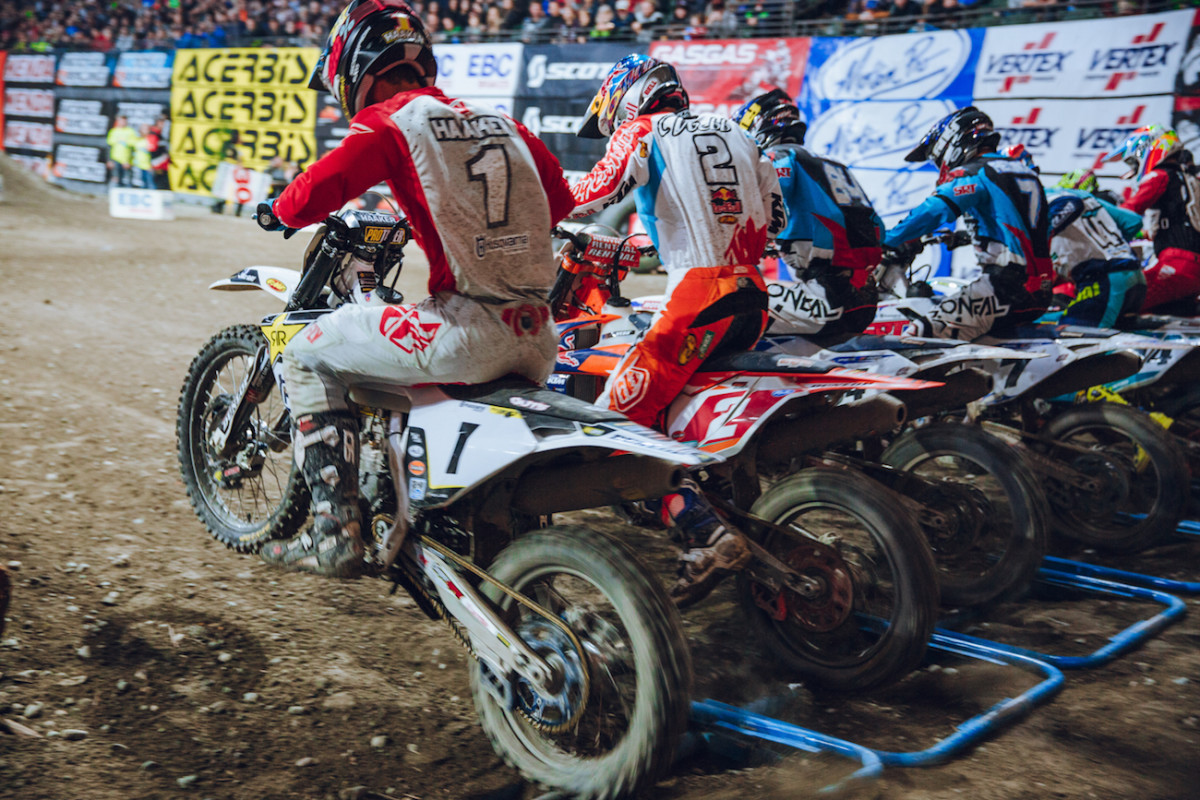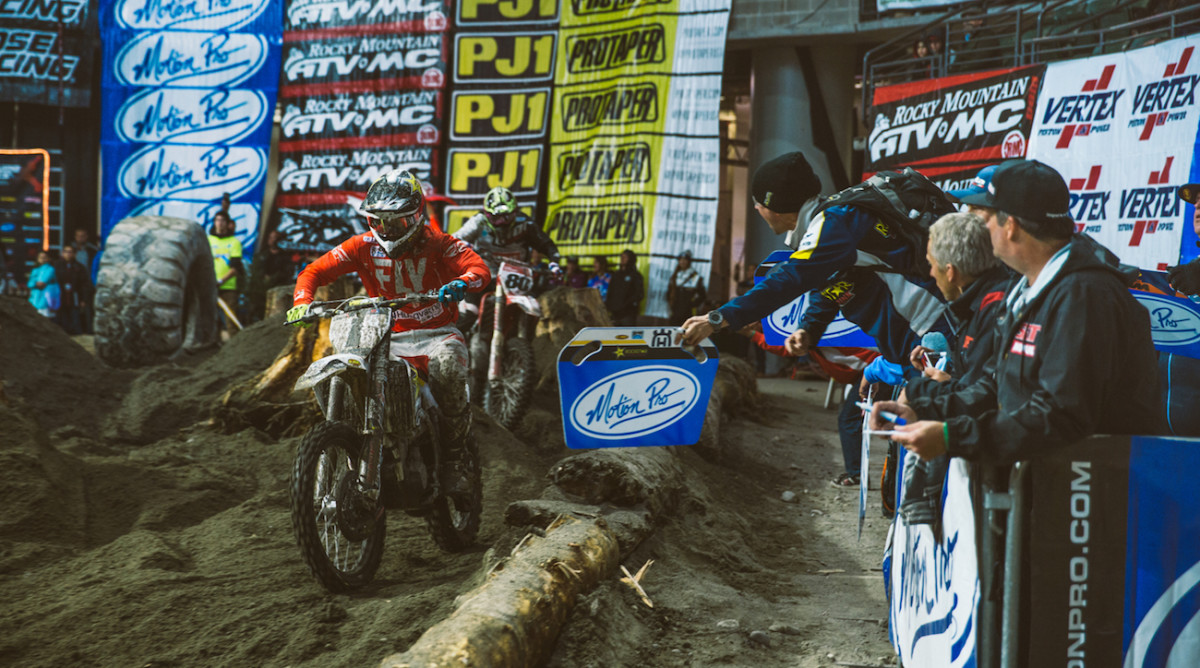Indoors and Off-Road: Discovering Endurocross

Recently, I attended the fourth round of the 2017 EnduroCross series in Everett, Washington, 45 minutes outside of Seattle. EnduroCross is an extreme, off-road motorcycle racing series where riders must traverse obstacles on an indoor course. This was a new sport for me, and I had no clue what to expect.
Each course is unique and has its own obstacles. On this course, 15 riders began with a 30-yard straightaway before the width of the course shrunk by half on a hairpin left turn. Then they raced 14 laps on a course containing multiple sets of logs, rocks, jumps, water, and tree roots.
Some of the obstacles on this track could be found at all EnduroCross courses, such as the rock garden—an obstacle that requires riders to travel uphill through huge, shifting rocks, ride over a log, then back down the hill over rocks—and the tire jump.
Corey Eastman, the director of consumer engagement for EnduroCross, explained that each course has some obstacles that are meant to emulate the environment where the race is being held. For example, he said that the tree roots at this race were dug up from the ground and placed in dirt at the course, as they are something you would have to navigate your way through if you were off-roading in the Pacific Northwest. When EnduroCross traveled to Scottsdale, Arizona, on October 28, there were some deep-sand obstacles similar to something you might find in the desert.

There was a new obstacle in Everett as well: a set of metal boxes filled to the brim with water and rocks, meant to imitate riding over river rocks. This obstacle would prove to have a multitude of effects in the race.
In EnduroCross, you get points for how you finish in a race: 25 for first place, 22 for second, 20 for third, and so on. Coming into the race, second place in the SuperEnduro category, which is made up of professionals, was occupied by Colton Haacker. Prior to the race, he explained that his strategy for the new river rocks obstacle was to be sure his bike “did not get caught” on the wrong side of the rocks.
Like the environment, the course was constantly changing. Every lap of every race, something was different. To begin the night, there was a series of bumps riders had to go over, and by intermission, you could scarcely tell they were bumps. By the end of the night, that part of the course was basically a straightaway.
With riders consistently taking the same path around the roots, the dirt around them was constantly changing too. Since the roots were placed in the tightest corner on the course, there was little space for riders to maneuver through, and the line (or direction) they took to begin the night wasn’t available at the end. It took only one race for the river-rocks section to make an impact because the water sprayed out of the boxes and onto the rest of the course, quickly creating a pool. In essence, this was a new obstacle because it was formed right before a jump. Eastman said that this wasn’t something EnduroCross anticipated when designing the obstacle.

Haacker explained that part of the sport is the course getting chewed up, changing, and the riders having to deal with it, regardless of what happens. He finished third, and Cody Webb won his third straight main event. (Webb went on to win the 2017 championship.)
An extreme course change could have happened during the amateur race when a rider’s bike got stuck in the rock garden, and its engine wouldn’t stop running. So the rider and an EnduroCross official pulled the spark plug from the engine. It took several minutes for the engine to stop running, though, so long that it began to smoke—a lot—and almost exploded.
When I caught up with Eastman later in the night, he informed me that if the engine had caught fire, the race would have stopped until the fire was out. Then they would have restarted the race, and if the fire had reached the firewood pit (which was adjacent to the rock garden), they would have kept the same wood there, even if it was partially or fully charred.
I learned a lot about a new sport and had a great experience doing it. While I didn’t 100% know what to expect, by the time I left, I was asking my parents if I could come back next year.
Photographs courtesy of Endurocross
